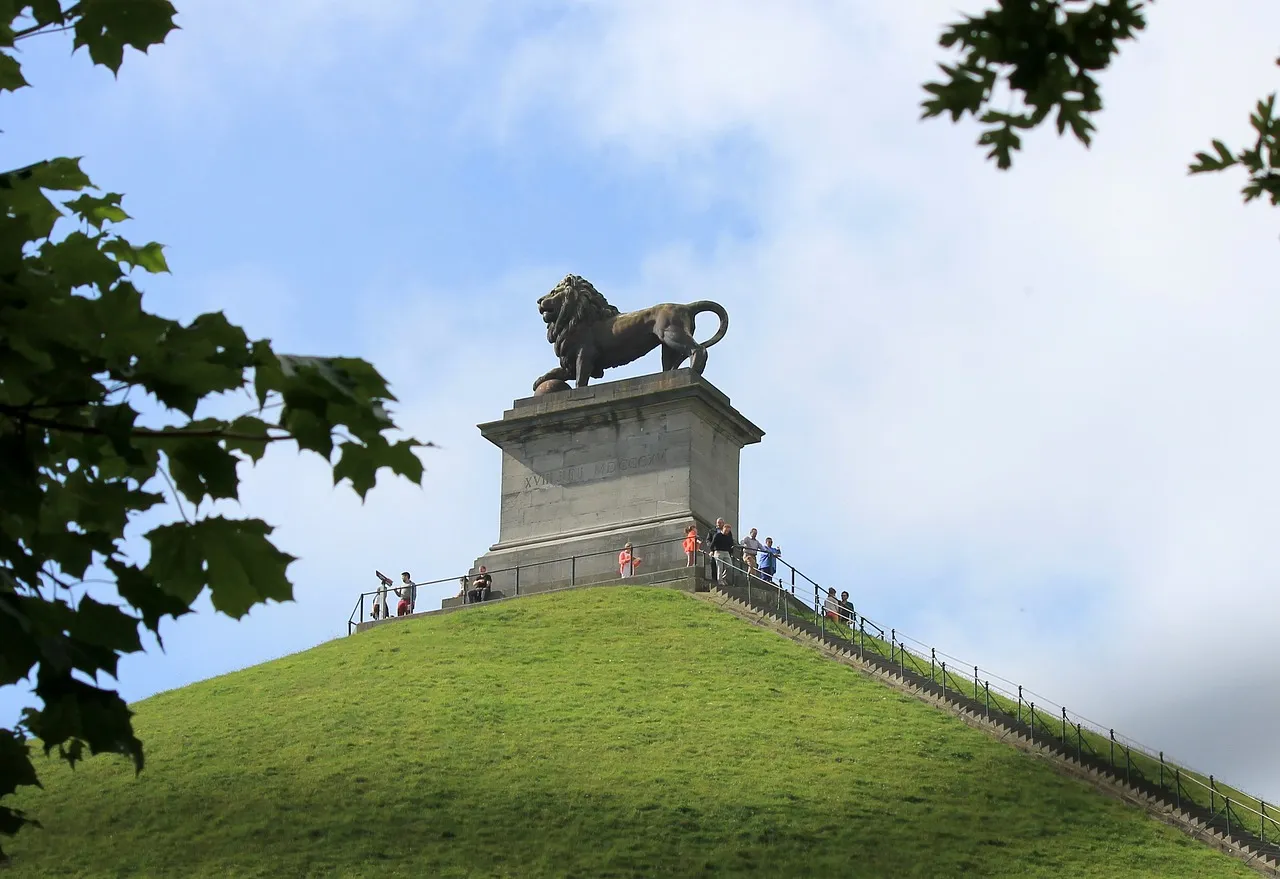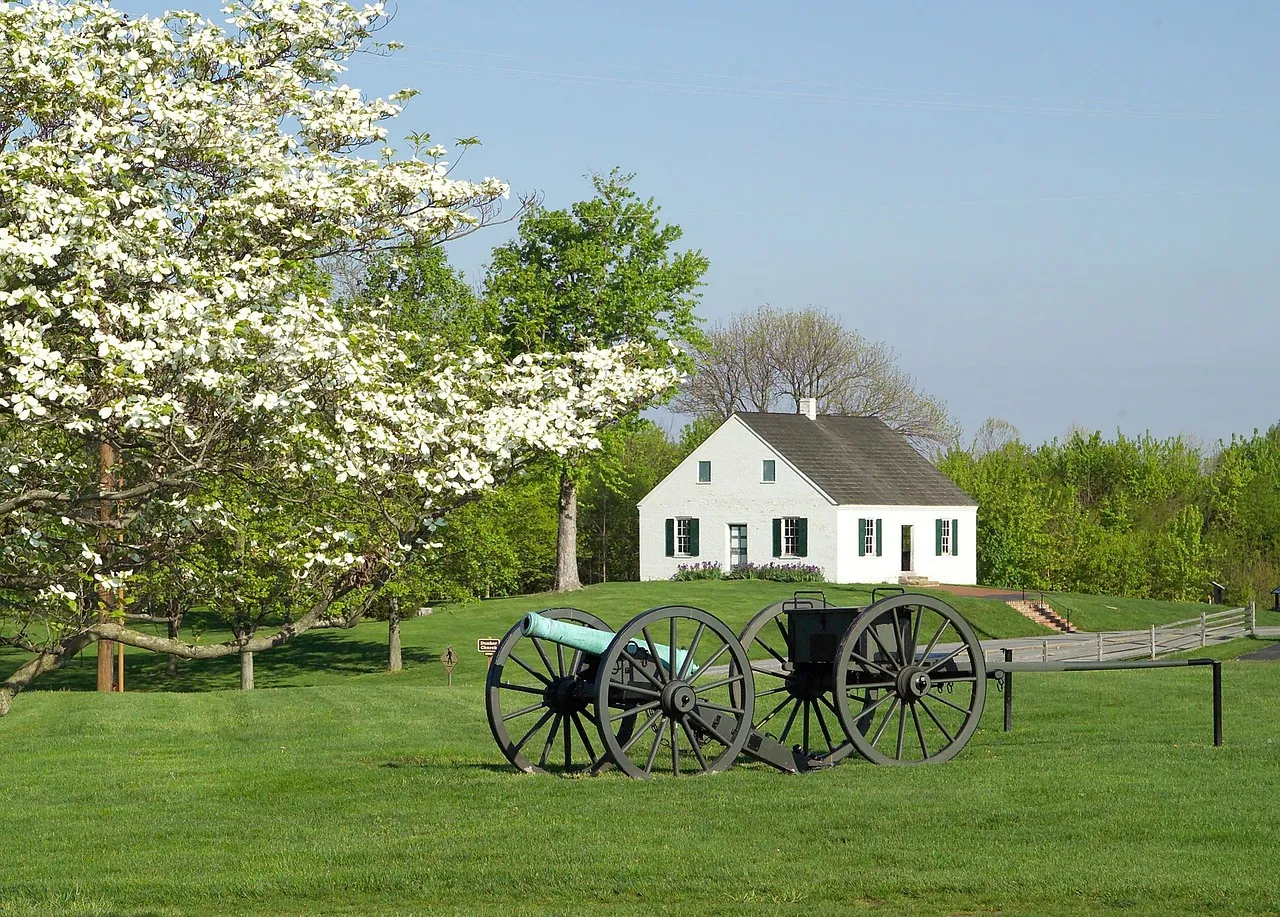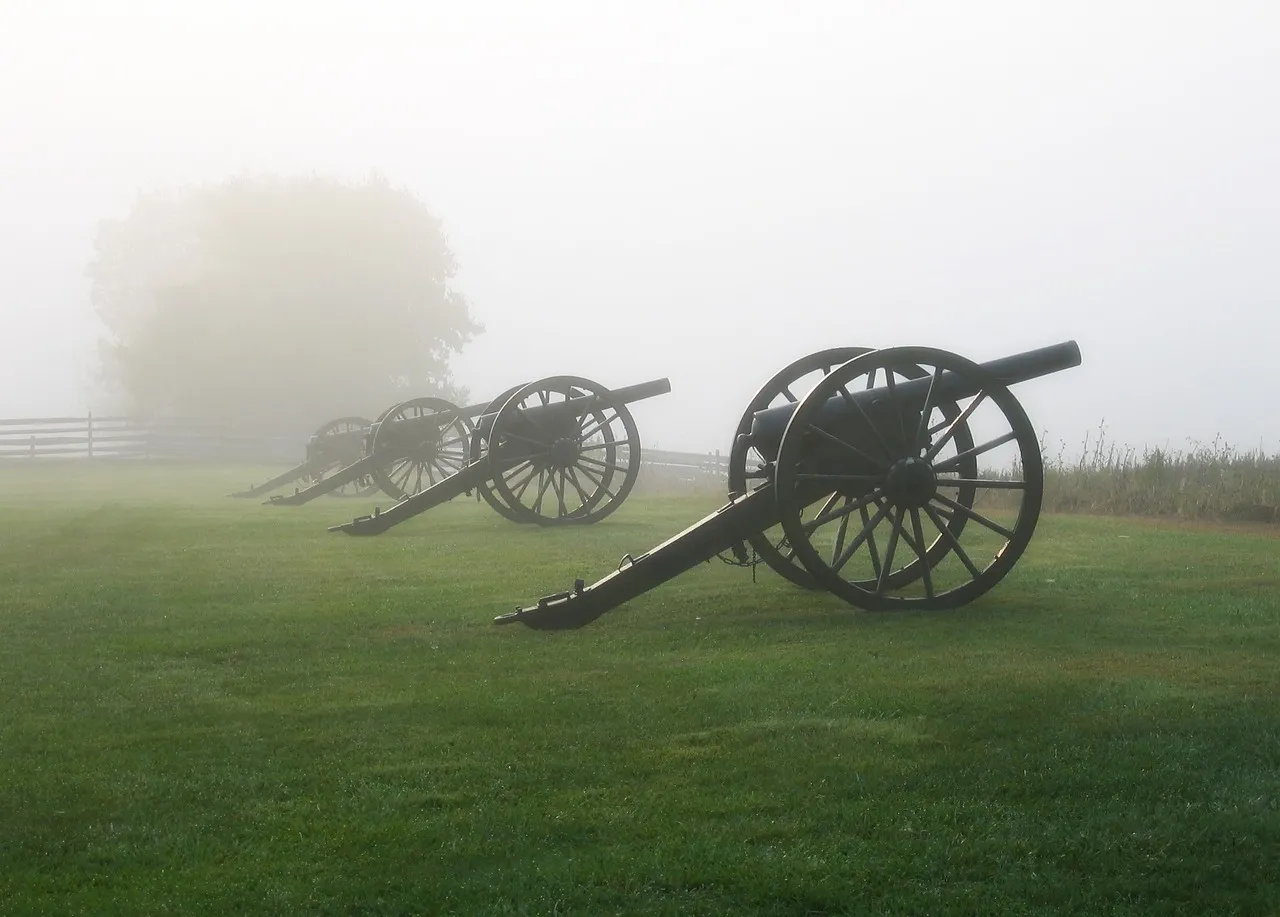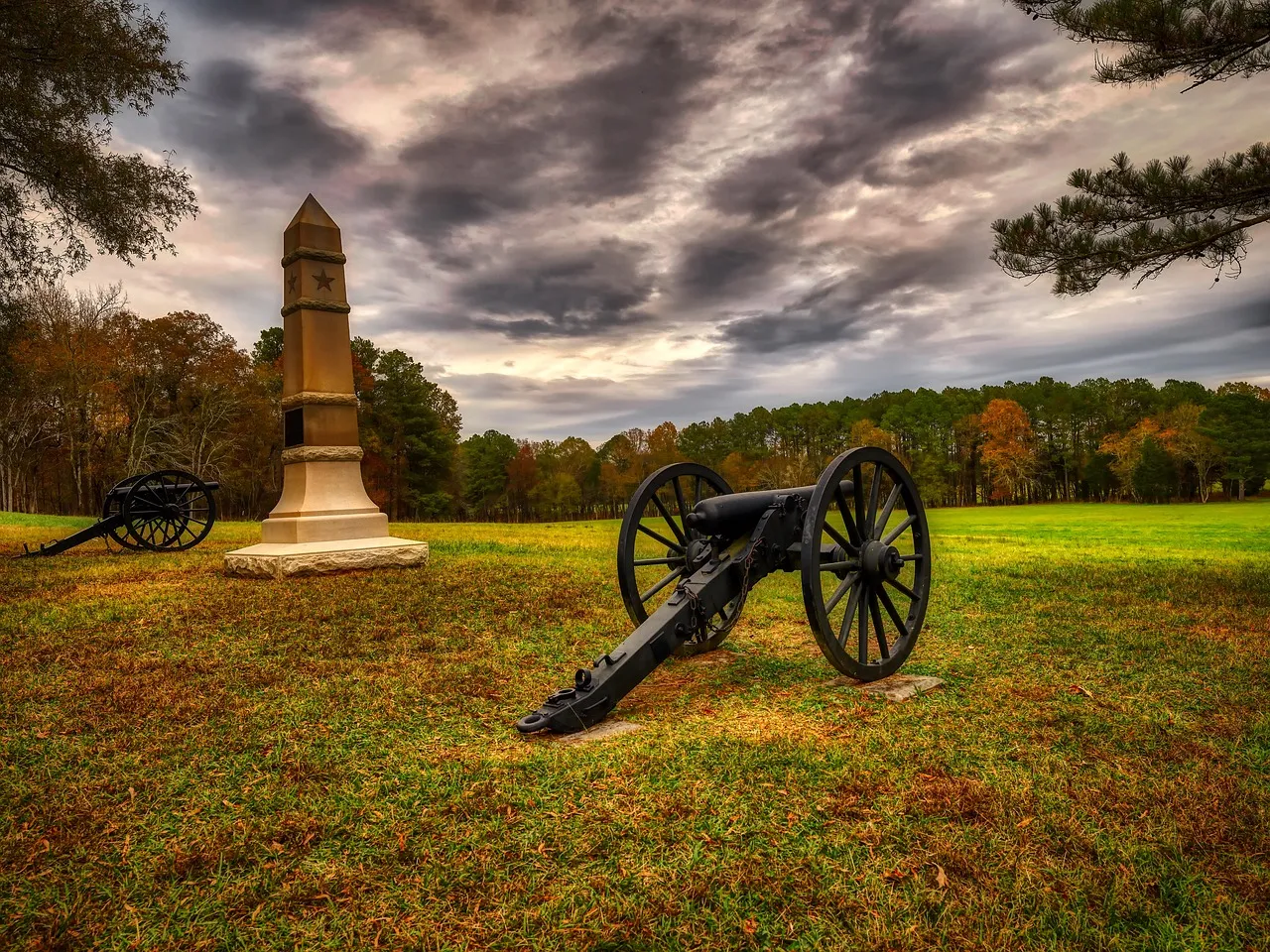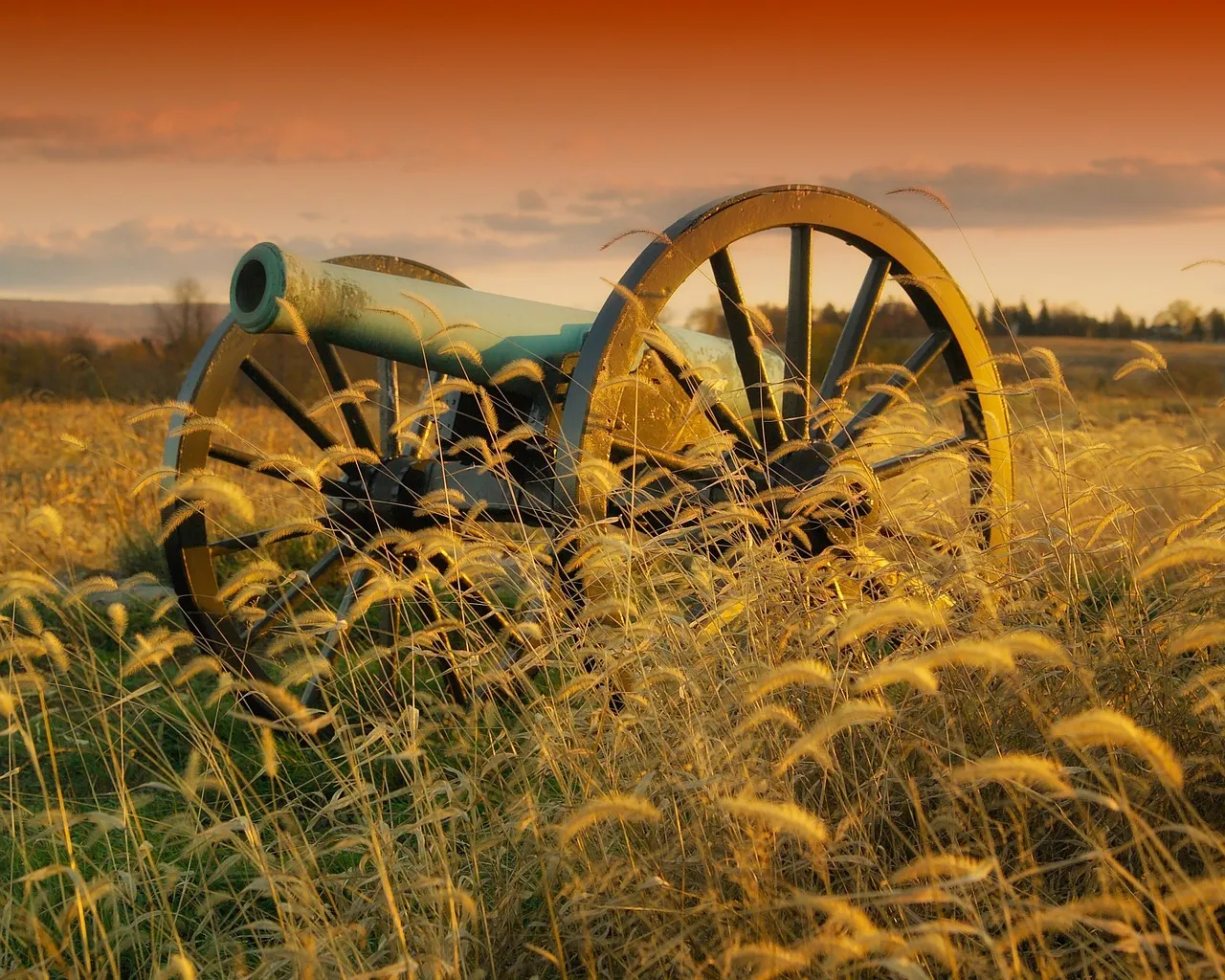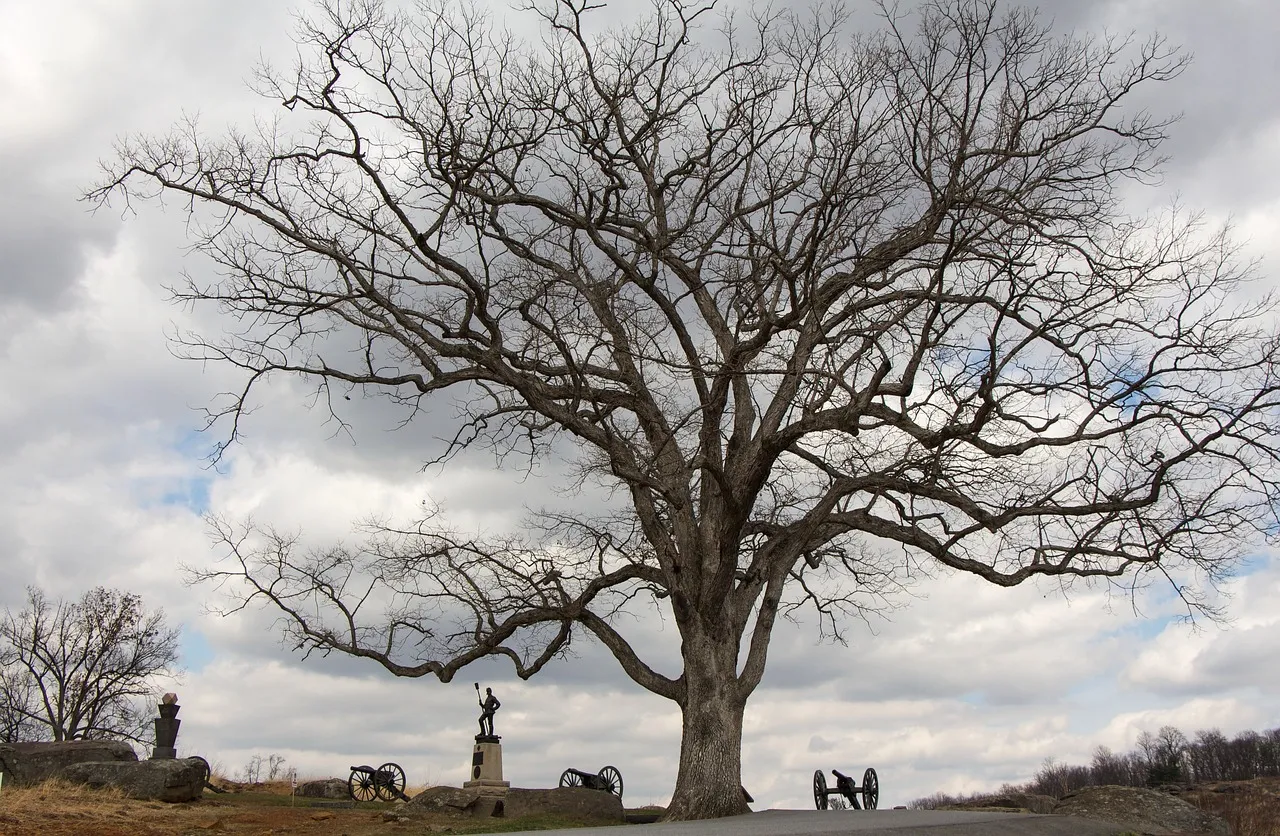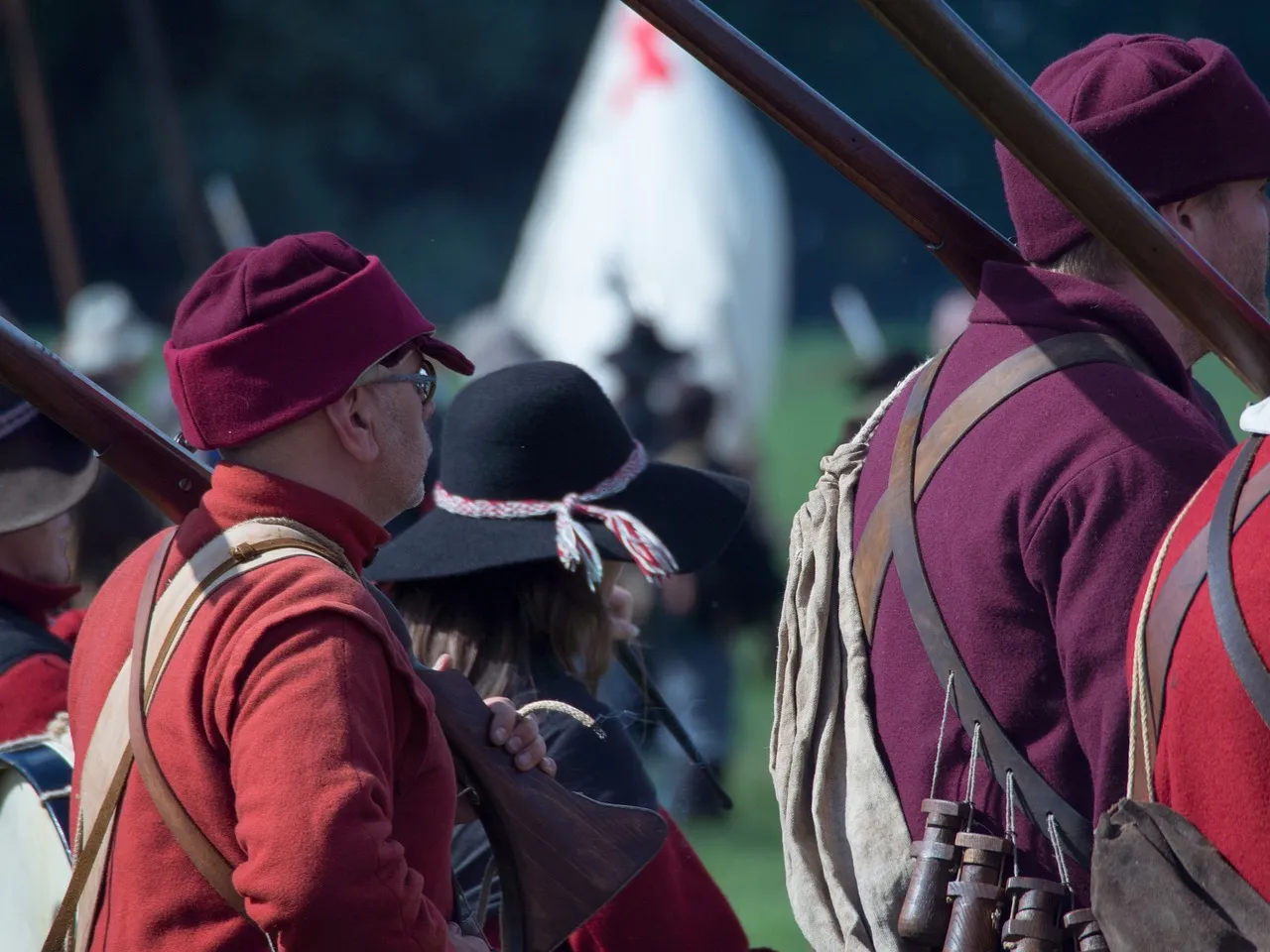Embarking on a journey through time, historical battlefield tours offer a unique and immersive experience that goes beyond the pages of a history book. As you step onto hallowed grounds where pivotal moments in history unfolded, you become a witness to the stories that shaped nations and defined generations. In this blog post, we will delve into the fascinating world of historical battlefield tours, exploring the significance of these sites and the enriching experiences they provide.
Historical Battlefield Tours
Exploring Hallowed Grounds
Historical battlefield tours take you to the very heart of the past, allowing you to walk in the footsteps of those who fought for freedom, justice, and ideals. Whether it’s the iconic battlefields of Gettysburg, the solemn grounds of Normandy, or the historic sites of ancient civilizations, each location tells a tale that is both poignant and powerful.
These tours provide a tangible connection to history, giving visitors a deeper understanding of the challenges faced by soldiers and civilians alike. Walking through the fields, trenches, and forts, one can’t help but feel the weight of the sacrifices made on these battlegrounds.
Educational Significance
One of the remarkable aspects of historical battlefield tours is their educational value. Far from being a mere excursion, these tours serve as outdoor classrooms where history comes alive. Knowledgeable guides provide insights into the strategic maneuvers, the bravery of soldiers, and the consequences of these battles on the course of history.
From the weapons used to the tactics employed, visitors gain a comprehensive understanding of the events that transpired. Many tours incorporate multimedia presentations, artifacts, and interactive exhibits, enhancing the learning experience and making history accessible to all.
Preserving Heritage
Historical battlefield tours play a crucial role in preserving our cultural heritage. By maintaining and protecting these sites, we ensure that future generations can learn from the past and appreciate the sacrifices made by those who came before them. Governments, conservation organizations, and local communities work hand in hand to safeguard these historical treasures for the benefit of all.
Communal Reflection
Visiting a historical battlefield is not only an individual journey but also a communal experience. Sharing the site with fellow enthusiasts, engaging in discussions, and participating in group activities foster a sense of shared history. These tours become opportunities for people to come together, reflect on the past, and contemplate the lessons that can be drawn from the struggles and triumphs of bygone eras.
Practical Considerations
When planning a historical battlefield tour, consider factors such as the season, available amenities, and the level of physical activity involved. Many tours cater to a variety of preferences, offering walking tours, guided bus excursions, or even self-guided options. Additionally, check for visitor centers, museums, and resources that can enhance your understanding of the historical context.
Historical battlefield tours provide a gateway to the past, allowing us to explore the complexities of history in a tangible and memorable way. Whether you are a history enthusiast, a student, or someone seeking a unique travel experience, these tours offer a profound connection to the events that have shaped our world. As you stand on these hallowed grounds, you’ll realize that history is not just a story to be told; it’s an experience to be lived. So, lace up your walking shoes, pack your curiosity, and embark on a journey through time with historical battlefield tours – where the echoes of the past still resonate today.
Battlefield history and tours
Embarking on a journey through the annals of time, battlefield history and tours provide an unparalleled opportunity to unravel the stories woven into the very fabric of our past. From ancient conflicts to modern warfare, these hallowed grounds serve as witnesses to the triumphs, tragedies, and transformations that have shaped civilizations. In this blog post, we’ll delve into the captivating world of battlefield history and tours, exploring their significance and the immersive experiences they offer.
Exploring the Layers of Battlefield History
Battlefield history is a tapestry of human courage, strategy, and sacrifice. It spans centuries and continents, recounting the tales of epic clashes that have altered the course of nations. From iconic battles like the Battle of Gettysburg and the D-Day landings to lesser-known skirmishes, each site has a unique story to tell.
These battlegrounds are living classrooms, offering insights into the political, social, and cultural dynamics that fueled conflicts. Understanding the context surrounding these events is essential to appreciating the complexities of war and its profound impact on societies.
Immersive Experiences Through Battlefield Tours
The allure of battlefield tours lies in their ability to transport participants from passive observers to active participants in history. Whether guided by knowledgeable experts or explored through self-guided itineraries, these tours create an immersive experience that transcends traditional learning methods.
Walking the same paths as soldiers, standing in the shadow of historic landmarks, and witnessing the scars left by battle – these experiences forge a deep connection between the present and the past. Modern technology, such as augmented reality and interactive exhibits, further enhances the tour experience, bringing history to life in ways unimaginable just a few years ago.
Educational Significance
Battlefield tours are not just recreational activities; they are powerful educational tools. By engaging with primary sources, artifacts, and on-site presentations, participants gain a nuanced understanding of the events that unfolded. Knowledgeable guides provide context, weaving together the intricate threads of history and making it accessible to visitors of all ages.
These tours offer a visceral understanding of military tactics, the impact of terrain on battles, and the human stories behind the conflicts. Schools, universities, and history enthusiasts alike recognize the value of these tours as unique opportunities for experiential learning.
Preservation of Historical Sites
The conservation of battlefield sites is a crucial aspect of preserving our shared heritage. Organizations, governments, and local communities work tirelessly to maintain these sites, ensuring that future generations can continue to learn from them. Preservation efforts go beyond physical structures; they include the protection of ecosystems and the commemoration of those who fought and perished on these grounds.
Sustainable Tourism
As interest in battlefield tours grows, there is a heightened awareness of the need for sustainable tourism practices. Balancing the preservation of historical sites with the influx of visitors requires careful planning and responsible tourism initiatives. Collaborations between tour operators, local communities, and conservationists aim to create experiences that are not only enriching for visitors but also sustainable for the long-term protection of these sites.
Battlefield history and tours offer a profound journey into the past, allowing us to touch the untold stories of valor and sacrifice. As we stand on these sacred grounds, we become witnesses to the resilience of the human spirit and the transformative power of historical events. Whether you are a history buff, a student, or a curious traveler, these tours beckon you to explore, learn, and reflect on the chapters of history that echo through time. So, embrace the opportunity to step into the footprints of the past and uncover the rich tapestry of battlefield history and tours – where the echoes of battles still resonate, inviting us to understand, remember, and honor the legacy of those who came before us.
WWI and WWII battlefield sites
The scars of World War I and World War II have left an indelible mark on the landscapes where history unfolded. Visiting battlefield sites from these two monumental conflicts is a powerful and poignant experience, offering a profound connection to the past. In this exploration, we delve into the stories etched into the grounds of WWI and WWII, discovering the significance of these sites and the lessons they continue to impart.
World War I Battlefield Sites:
1. The Somme, France – Honoring Sacrifice on Hallowed Ground
The Somme, a region in northern France, witnessed one of the bloodiest battles of World War I. The rolling fields and preserved trenches serve as a poignant reminder of the unimaginable sacrifices made by soldiers. Memorials such as Thiepval and the Beaumont-Hamel Newfoundland Memorial pay tribute to the thousands who lost their lives. The preserved landscape immerses visitors in the haunting reality of trench warfare.
2. Verdun, France – Where Fortresses Bear Witness to Carnage
Verdun, another French battlefield site, stands as a symbol of enduring resilience and the human cost of war. The forts, trenches, and ossuaries scattered across the landscape tell the story of the relentless battles that unfolded here. The Douaumont Ossuary, with its solemn tower and crypt, houses the remains of soldiers and serves as a powerful testament to the enduring impact of war on a generation.
3. Ypres, Belgium – Flanders Fields and the Last Post Ceremony
Ypres, in the heart of Flanders, Belgium, is synonymous with the haunting poem “In Flanders Fields.” The Menin Gate, inscribed with the names of missing soldiers, and the Last Post Ceremony at the Menin Gate Memorial pay homage to the fallen. Ypres, surrounded by serene countryside, stands as a poignant reminder of the devastation wrought by World War I.
World War II Battlefield Sites:
4. Normandy, France – D-Day Beaches and the Path to Liberation
Normandy’s beaches, including Omaha, Utah, and Juno, witnessed the historic D-Day landings on June 6, 1944. The remnants of Mulberry harbors, Pointe du Hoc’s rugged cliffs, and the American Cemetery at Omaha Beach provide a visceral connection to the monumental effort to liberate Europe. Normandy is a living memorial to the courage and sacrifice of the Allied forces.
5. Auschwitz-Birkenau, Poland – Bearing Witness to Holocaust Horrors
While not a traditional battlefield, Auschwitz-Birkenau in Poland serves as a haunting reminder of the atrocities committed during World War II. The preserved concentration and extermination camps stand as a solemn memorial to the millions who perished. Visiting Auschwitz-Birkenau is a somber yet essential experience, underscoring the importance of remembrance and the vow to never forget.
6. Dunkirk, France – Evacuation and Resilience
Dunkirk, immortalized for the daring evacuation of Allied soldiers in 1940, bears witness to both the chaos of war and the resilience of those facing adversity. The beaches and the Dunkirk War Museum narrate the tale of Operation Dynamo, where a makeshift flotilla of boats rescued hundreds of thousands of soldiers from the encroaching German forces.
Reflections on Visiting Battlefield Sites:
7. The Ardennes, Belgium – Battle of the Bulge and Winter Warfare
The Ardennes, known for the Battle of the Bulge, offers insights into the harsh winter warfare that characterized this pivotal conflict. Bastogne, with its Nuts! Museum and Mardasson Memorial, pays homage to the Allied forces who resisted the German offensive. The dense forests and picturesque landscapes stand in stark contrast to the intensity of the battles fought here.
8. Hiroshima, Japan – A Solemn Reminder of Nuclear Devastation
While not a conventional battlefield, Hiroshima serves as a poignant reminder of the destructive power of war. The Hiroshima Peace Memorial, commonly known as the Atomic Bomb Dome, stands as a symbol of hope and a call for peace. Visiting Hiroshima offers a chance for reflection on the consequences of conflict and the imperative of fostering a world without nuclear weapons.
Exploring WWI and WWII battlefield sites is a profound and humbling journey. These landscapes, marked by sacrifice, resilience, and the quest for freedom, offer a tangible connection to the past. From the haunting trenches of the Somme to the solemnity of Auschwitz-Birkenau and the beaches of Normandy, each site tells a unique story. Visiting these places is not just about understanding history; it’s about honoring the lives lost, learning from the past, and working towards a future where the echoes of war are replaced by the pursuit of peace.
Historical war reenactment events
Immersing oneself in history goes beyond the pages of a book or the walls of a museum. For those seeking a more visceral experience, historical war reenactment events offer a unique and captivating journey back in time. These events bring history to life, allowing participants and spectators alike to step into the shoes of soldiers, witness pivotal moments, and gain a profound understanding of the past. In this exploration, we delve into the world of historical war reenactments, where authenticity meets adrenaline.
Understanding Historical War Reenactments:
1. The Art of Living History
Historical war reenactments are a form of living history, where dedicated enthusiasts meticulously recreate significant battles or periods from the past. From the uniforms to the weapons, participants strive for authenticity, aiming to transport themselves and spectators to a bygone era. The goal is not just to recreate events but to offer a tangible and immersive experience of historical life.
2. Authenticity in Every Detail
Participants in historical war reenactments are passionate about authenticity. Every detail, from the stitching on uniforms to the insignia on helmets, is carefully researched and recreated. Weapons and equipment are often exact replicas, and even the tactics used during battles are faithfully reproduced. This commitment to accuracy creates an environment where spectators can genuinely feel transported to the historical moment being depicted.
Types of Historical War Reenactment Events:
3. Civil War Reenactments – Reliving America’s Turbulent Past
In the United States, Civil War reenactments are particularly popular. Enthusiasts don Union or Confederate uniforms, reenacting iconic battles such as Gettysburg or Antietam. These events provide a poignant glimpse into the struggles and sacrifices of the soldiers who fought in one of the most pivotal conflicts in American history.
4. World War II Reenactments – Recreating the Global Conflict
World War II reenactments attract participants and spectators worldwide. From the D-Day landings to the Battle of the Bulge, these events capture the scale and intensity of the global conflict. The roar of tanks, the chatter of machine guns, and the sight of vintage aircraft overhead create a sensory-rich experience that transports attendees to the frontlines of history.
5. Medieval and Renaissance Reenactments – A Journey to the Past
Stepping further back in time, medieval and Renaissance reenactments allow participants to relive the pageantry and battles of centuries past. Knights in shining armor joust, archers demonstrate their skill, and encampments showcase the daily life of different social classes. These events provide a colorful and educational experience for spectators of all ages.
The Role of Participants:
6. Passionate Enthusiasts and Historians
Participants in historical war reenactments come from diverse backgrounds. Some are history enthusiasts with a deep passion for a specific period, while others are professional historians or military veterans. The common thread is a shared dedication to preserving and promoting an authentic understanding of history.
7. The Brotherhood of Reenactors
Joining a reenactment group often fosters a sense of camaraderie and shared purpose among participants. Whether they are portraying soldiers, medics, or civilians, reenactors collaborate to create a cohesive and immersive experience. The friendships formed in these groups often extend beyond the battlefield, creating lasting bonds among those who share a love for history.
The Impact on Spectators:
8. Education and Historical Awareness
For spectators, historical war reenactments offer a dynamic and engaging way to learn about the past. Unlike traditional history lessons, reenactments provide a visual and visceral experience that can make historical events more accessible and relatable. Attendees gain a deeper understanding of the challenges faced by those who lived through tumultuous times.
9. Emotional Connection to History
The emotional impact of witnessing a reenactment is undeniable. Whether it’s the solemnity of a Civil War encampment or the thunderous roar of tanks in a World War II battle, spectators often find themselves emotionally connected to the events unfolding before them. This emotional resonance is a powerful tool for fostering empathy and understanding.
Challenges and Controversies:
10. Balancing Authenticity and Sensitivity
Historical war reenactments occasionally face challenges related to sensitivity and cultural awareness. Events that involve sensitive topics, such as certain battles or periods, require a delicate balance between historical accuracy and respect for the emotions of both participants and spectators. Reenactors and organizers must navigate these challenges with care and consideration.
11. Addressing Misconceptions
Critics sometimes argue that historical war reenactments glorify or romanticize war. In response, many reenactors emphasize their commitment to education and historical accuracy, aiming to dispel misconceptions about their motives. They stress the importance of preserving the memory of those who lived through historical conflicts and the lessons that can be learned from the past.
Historical war reenactments serve as a captivating bridge between the past and the present. Through meticulous attention to detail and a shared passion for history, participants transport themselves and spectators to pivotal moments in time. These events not only offer an engaging form of entertainment but also serve as a powerful tool for education, fostering a deeper understanding of the complexities and sacrifices of the past. As long as there are enthusiasts dedicated to preserving the authenticity of history, the echoes of the past will continue to resonate through the immersive experiences of historical war reenactment events.
Guided historical tours
Embarking on a guided historical tour is more than just a stroll through the annals of the past. It’s a journey that brings history to life, immersing participants in the tales, triumphs, and tribulations of bygone eras. In this exploration, we unravel the essence of guided historical tours, delving into the reasons they captivate the curious and the unique experiences they offer.
1. The Living Stories Unfolded
Guided historical tours serve as portals to the past, where knowledgeable guides breathe life into historical narratives. These storytellers, often experts in their field, weave tales that transcend the pages of textbooks, offering a vivid and immersive experience. From ancient civilizations to modern revolutions, each historical tour unfolds like a living story, capturing the imagination of participants.
2. Expert Guides as Time Travel Companions
The heartbeat of any guided historical tour is the guide. These individuals are not merely narrators but passionate enthusiasts or seasoned historians who carry the torch of knowledge. Their expertise transforms monuments, artifacts, and landscapes into dynamic elements of historical discourse. As time travel companions, they connect the dots, providing context and insight that enrich the overall experience.
3. Walking Through Time
Whether strolling through cobbled streets in a medieval town or navigating the remnants of ancient ruins, guided historical tours offer a unique perspective on architecture, urban planning, and societal structures. The tangible connection to historical spaces allows participants to witness the evolution of civilizations and immerse themselves in the very environments that shaped the course of history.
4. Thematic Immersions
Guided historical tours often adopt specific themes, providing a focused exploration of particular periods or events. From the Renaissance art of Florence to the haunting tales of Salem’s witch trials, these thematic immersions allow participants to delve deep into the nuances of a specific historical niche. This focused approach adds layers to the overall understanding of the past.
5. Behind-the-Scenes Access
One of the unique aspects of guided historical tours is the potential for behind-the-scenes access. Exclusive tours may grant participants entry to areas not open to the general public or provide access to artifacts and documents not typically on display. This insider perspective adds an element of exclusivity and depth to the experience, allowing participants to feel like historical VIPs.
6. Interactive Learning for All Ages
Guided historical tours cater to diverse audiences, making history accessible and engaging for all ages. Whether for school groups, families, or solo travelers, these tours blend entertainment with education. Interactive elements, such as reenactments or hands-on experiences, ensure that participants actively absorb the historical knowledge presented, creating lasting impressions.
7. Preservation and Cultural Heritage
Participating in guided historical tours contributes to the preservation of cultural heritage. By supporting historical sites and monuments through tourism, participants play a role in ensuring the longevity of these treasures. The revenue generated often funds conservation efforts, safeguarding the physical remnants of the past for future generations to explore and appreciate.
8. Contextualizing Art and Artifacts
Art and artifacts are not mere relics on guided historical tours; they are windows into the minds and lifestyles of those who came before. Guides adeptly contextualize paintings, sculptures, and artifacts, revealing the stories they tell about the societies that created them. This holistic approach transforms museums and historical sites into vibrant galleries of living history.
9. Culinary Time Travel
Guided historical tours extend beyond visual and auditory experiences, incorporating the culinary delights of different eras. From sampling medieval feasts to savoring dishes popularized during historic periods, participants can embark on a sensory journey through time. Culinary elements add a delicious layer to the overall historical immersion.
10. Tailored Experiences for Every Interest
Whether fascinated by military history, enchanted by the elegance of royal courts, or intrigued by industrial revolutions, there’s a guided historical tour tailored to every interest. Specialized tours cater to niche preferences, allowing participants to dive deep into the aspects of history that captivate them the most.
Guided historical tours are bridges that connect the present to the past, allowing participants to traverse the landscapes of history with expert guides as their companions. These tours are more than educational excursions; they are transformative experiences that offer a profound understanding of the world’s collective heritage. Whether unraveling the secrets of ancient civilizations or reliving pivotal moments in modern history, guided historical tours are invitations to explore the tapestry of time and witness the threads that have woven the fabric of our existence.
Military history travel destinations
Military history enthusiasts and curious travelers alike find themselves drawn to destinations that bear witness to the battles, strategies, and legacies of the past. Exploring military history travel destinations isn’t just a journey through time; it’s an opportunity to stand on hallowed grounds and gain insights into the profound impact of conflicts on the world. In this exploration, we unveil some of the most captivating military history travel destinations that beckon history buffs and adventure seekers.
1. Normandy, France – D-Day Beaches and Beyond
The beaches of Normandy stand as an enduring testament to the bravery and sacrifice of Allied forces during World War II. Visitors can walk the hallowed sands of Omaha, Utah, and Juno Beaches, where the D-Day landings took place. Museums like the Normandy American Cemetery and Memorial and the Utah Beach Museum provide comprehensive insights into the largest amphibious assault in history.
2. Gettysburg, USA – A Battlefield of Legends
Gettysburg, Pennsylvania, is synonymous with one of the most pivotal battles of the American Civil War. The Gettysburg National Military Park encompasses the sprawling battlefield where Union and Confederate forces clashed. Visitors can explore iconic sites like Little Round Top and Devil’s Den, gaining a profound understanding of the turning point that shaped the course of the Civil War.
3. Pearl Harbor, Hawaii – Honoring Sacrifice in the Pacific
Pearl Harbor, a solemn destination in Hawaii, marks the site of the infamous attack that propelled the United States into World War II. The USS Arizona Memorial and the USS Missouri provide poignant reflections on the events of December 7, 1941. The Pacific Aviation Museum and the USS Bowfin Submarine Museum offer a comprehensive exploration of the Pacific Theater’s impact.
4. Imperial War Museum, London – Chronicles of Conflict
The Imperial War Museum in London serves as a comprehensive repository of military history. From World War I to the present day, the museum’s exhibits showcase artifacts, documents, and interactive displays that chronicle the experiences of soldiers and civilians during times of conflict. It is a must-visit destination for those seeking a global perspective on military history.
5. Bastogne, Belgium – Battle of the Bulge Remembrance
Bastogne, nestled in the Ardennes region of Belgium, is a significant site linked to the Battle of the Bulge during World War II. The Bastogne War Museum and the Mardasson Memorial stand as tributes to the resilience of Allied forces during the intense winter battle. Visitors can explore the town and surrounding areas, gaining insights into the challenges faced by soldiers on both sides.
6. Hiroshima, Japan – A Sobering Reminder of Nuclear Warfare
Hiroshima, forever etched in history, is a destination that invites reflection on the devastating impact of nuclear warfare. The Hiroshima Peace Memorial, also known as the Atomic Bomb Dome, stands as a symbol of hope and a call for peace. The Peace Memorial Park and Museum provide a sobering experience, emphasizing the importance of nuclear disarmament.
7. Verdun, France – Echoes of the Great War
Verdun, a name synonymous with one of the longest and most brutal battles of World War I, invites visitors to explore the haunting landscapes and remnants of fortifications. The Douaumont Ossuary and Fort de Vaux bear witness to the staggering human cost of the conflict. Verdun is a poignant reminder of the resilience and sacrifice of those who endured the Great War.
8. Khe Sanh, Vietnam – Echoes of the Vietnam War
Khe Sanh, a remote outpost in Vietnam, was the site of a pivotal battle during the Vietnam War. The Khe Sanh Combat Base and the nearby Ho Chi Minh Trail serve as poignant reminders of the challenges faced by American and Vietnamese forces. Exploring these sites provides insights into the complexities of the Vietnam War and its enduring impact on the region.
9. Edinburgh Castle, Scotland – Centuries of Military History
Edinburgh Castle, perched atop Castle Rock, has witnessed centuries of military history. From the Wars of Scottish Independence to both World Wars, the castle’s walls echo with tales of sieges, battles, and strategic importance. The National War Museum within the castle grounds showcases Scotland’s military heritage, making it a captivating destination for history enthusiasts.
10. Sarajevo, Bosnia and Herzegovina – Relics of the Yugoslav Wars
Sarajevo, the capital of Bosnia and Herzegovina, bears scars from the tumultuous period of the Yugoslav Wars. The Sarajevo Tunnel Museum, a remnant of the city’s wartime survival, and the Yellow Fortress offer insights into the siege of Sarajevo. Visiting these sites provides a somber but essential understanding of the complex history of the region.
Military history travel destinations are not merely places on a map; they are living testaments to the courage, sacrifice, and resilience of those who lived through times of conflict. From the beaches of Normandy to the hills of Gettysburg, each destination carries the weight of history and invites visitors to stand in the footsteps of those who shaped the course of nations. Exploring these destinations is not just a journey through time; it is a profound opportunity to learn, reflect, and pay homage to the indomitable human spirit in the face of adversity.
